Keelin Shanley never shied away from hard truths in her work as a journalist. And when she was confronted with the hardest truth of all in her own life, she faced it with the same courage and pragmatism.
“As I write, I know that I have, at most months to live. I’m fifty-one years of age, and I’ve had cancer for nine years, stage 4 cancer for three of them,” she wrote in January 2020, in what would become the opening of her memoir, A Light That Never Goes Out.
She didn't even have that long in the end. Keelin died on February 8th this year in St Vincent's hospital in Dublin, with her husband, Conor Ferguson, and their children, Lucy and Ben, by her side. "Just us and all the love," he writes in the closing chapter of the book.
Her death on the day of the general election – pipping the big political story to become the lead item on the Six One news, something Ferguson says Keelin would have got a “perverse enjoyment out of” – provoked a quiet but palpable grief among even those who didn’t know her well, or at all.
"People all over Ireland will have been greatly saddened by the news of the death of Keelin Shanley, broadcaster and award-winning journalist," the President, Michael D Higgins, said in a statement. The then-taoiseach, Leo Varadkar, said "as well as being a very talented journalist, she was a really lovely person".
You didn’t need to have known her personally to have sensed that about her, or to have been struck by her vigour, her empathy, her curiosity. Nor did you have to have known her to feel a rush of unfairness that her life was cut so short.
But her new memoir, finished by Ferguson since her death, is remarkably free of outrage, self-pity or anger. “Why would I be angry? Why shouldn’t it be me? What it comes down to is luck,” she wrote in those last weeks before she died.
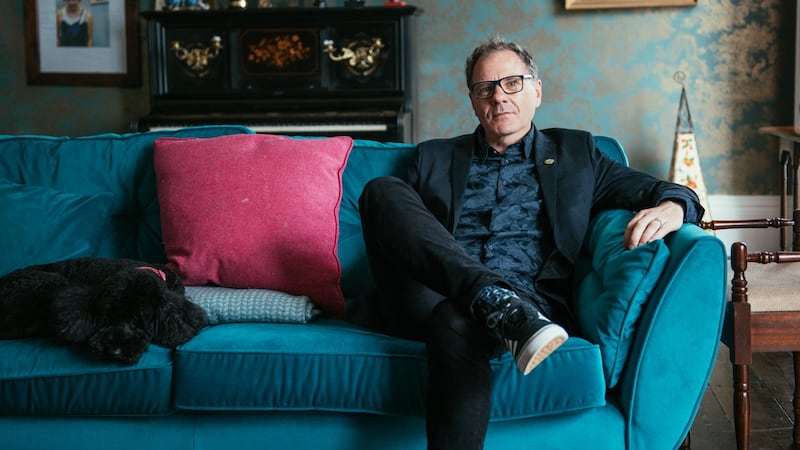
On the evening of her wake, Lucy, Ben and their father sat in the house that was quiet at last, and put the TV on. “And then Ben says, do you think we could move Mum’s coffin so we can see the telly better?” Ferguson recalls.
Keelin would have loved that “lack of reverence”, he says. “It felt like she was just still here.”
Her book is as she was – it is shot through with grace, intelligence, style, courage and moments of humour. Initially, though, she was something of a reluctant memoirist.
She didn't like to see herself as this champion of social justice. But that's kind of what she became.
She originally embarked on the book “to remind me of who I am, and to leave those who love me something to hold on to”, she writes. “I don’t know if it sounds egotistical, but I want to leave a little piece of myself behind for them so that I live on in some way in their memories, as well as in who they are.”
Insights
She knew she had stories to tell from her life as a journalist, and that readers might get from it insights into her work, and also “a sense that life is worth living, that family is to be cherished, that hope and joy are part of the everyday”.
She would have been horrified by the idea, Ferguson says, that people might think she was portraying herself as “the People’s Princess”. “She didn’t like to see herself as this champion of social justice. But that’s kind of what she became.”
It was only in her last year, watching back over tapes of her journalism that her RTÉ colleague Niamh O'Connor sent her, that "she realised she had done great work. And she did take great pride in the work once she reviewed it, but in a way, she wasn't focused on the significance of the issues she covered at the time. She was young and ambitious and wanted to make the work good. Watching these documentaries 20 years later, she understood the importance of such stories. She was proud of them. But what she really enjoyed was re-engaging with the people she met along the way."

The book recounts her experiences working for RTÉ on programmes including Prime Time and Far Away Up Close, interviewing young offenders and drug dealers; women victims of human trafficking in Romania; baby-faced 13-year-olds she encountered outside the Children's Court, who were exhausted from being out all night in stolen cars; prisoners in Honduras; the exhausted families of young people with disabilities who were in desperate need of government support; the people of St Teresa's Gardens in Dublin's inner city.
The book was co-written with editor Alison Walsh. But the process of going back over her own story was not always an easy one for Keelin. Beyond her work, she struggled with the idea of revealing too much of herself personally. "She was slightly terrified of the idea of the book, because she felt, 'I'm not that interesting. I haven't got that much to say about myself.'"
Reticence
She overcame her reticence, and along with the stories about her work as a journalist and her travels to some of the most dangerous places in the world, her memoir is infused with her sense of joy at the quiet, ordinary moments in life, her love of her family, and an acceptance of her death which is – though I suspect she would shudder at the word – inspiring. The accounts of her work are fascinating, but what lingers long after is her determination to wring every last drop out of life.
She never wanted to put herself at the centre of the story, and the same was true outside work. At parties, she would spend the whole evening talking to one or two people, Ferguson says. “She was just really adept at talking to people and putting them at ease so they would tell her anything, but they learned nothing about her. And then the party would be over and she’d only got to talk to two people. She got hooked on people.
“But you know, I’m not one to totally lionise my wife, as much as I still love her,” he grins. “There were many sides to her, all fascinating, but some sharper than others. She could be very single-minded, determined. She was very funny and adept at seeing through the bulls**t.” He’s not sure if that comes across in the book. “She wasn’t looking to settle any scores or make anyone feel bad. That was never her way.”
Her way was to just get on with it. She had recovered from breast cancer in 2011, having told only a few people that she was sick. “And thought I’d beaten it.” But a niggle in her shoulder in 2016 lead to a CT scan. “As soon as I saw it in the imaging room in St Vincent’s Hospital, I just knew… I could see it in front of me: the bright pinpoints of cancer in my shoulder lit up on the screen and I understood that it had come back,” she writes.
She got the phone call confirming what she already knew the following day, while she was walking the family dog, Dougal, with Ferguson. “Everything is the same and yet everything is completely different,” she recounts in the memoir. “The sea, the path beside it with the seagulls and the discarded paper napkins from Teddy’s Ice Cream, the Fish Shack restaurant with its big umbrellas flapping in the breeze, the freighters crossing the bay – everything just seemed to be normal. And yet it wasn’t at all.”
They hugged one another and he cried. “I wondered if he could see something that I couldn’t: what the world would be like for him without me in it. The enormity of it was hard to grasp,” she writes.
Diagnosis
When the diagnosis might have made others slow down, she seemed to speed up. She oversaw the purchase of a new family home, a rambling, period house in Dún Laoghaire in dire need of renovation; she took on the job of anchoring the Six One News; she started swimming in the sea again, and she focused her sights on getting on a trial for a promising new treatment in the US, "her last big project, and the only one that didn't succeed", Ferguson writes.
Did he ever worry that she might have taken on too much?
"I never really thought of it like that. But yes, I did have misgivings. When she was on the Late Late Show in 2013 [for the Irish Cancer Society Daffodil Day], she was like, I've beaten it, I feel fine. She didn't really want to talk about cancer, because that's all in the past."
It made him uneasy, partly because he is a filmmaker – among other things -- who can’t help seeing the world like it’s a film at times. “If somebody is so blasé about having beaten their illness in a film, you know they’re not going to make it to the end of the film. I always felt like we should still stay nervous. But we wouldn’t have got as much done if we had followed me. So I tended to follow Keelin because she was the positive one. She was the one with the big plans and the motivation.”
She was, he says, someone who “didn’t know how to speculate pessimistically.” She didn’t let the diagnosis hold her back, “whether that was professionally, or buying a house, or getting the bloody dog, or whatever. She didn’t go, Let’s live less, in case it all ends sooner. And she was right. We got to live more.”
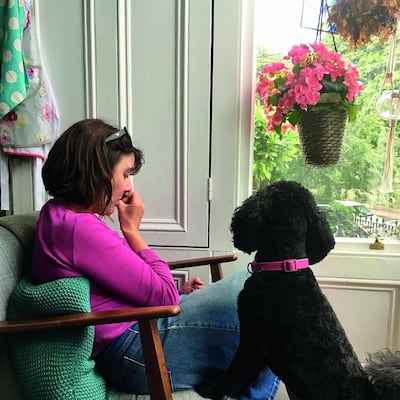
So she kept setting herself goals. Even in her final weeks, she was still setting herself goals. She wanted to live through to the spring: “As I write, I’m sure there’s a lightening in the winter days, even though it’s only January. I think I can see buds coming on the tall linden tree outside my bedroom window…Here I am in my winter phase, but I’d love to see another spring. I’d have to leave Conor and the children now, when the sky is grey and the weather bleak.”
‘Big consolation’
Ultimately, she died before spring, before the Covid-19 pandemic. She went, he writes, “while the going was good...It’s a big consolation that she’s not around for it. She would have been disturbed and fascinated in equal measure.” She believed herself that she had already beaten the odds: that taking the Six One job helped her to get another three years, instead of the two she’d been warned might be all she would have. Ferguson thinks her perpetual forward momentum did help her to stay alive for longer. “I think that is the key. I mean, of course, there’s no scientific basis for it, but anybody who was close to Keelin felt that her positive attitude gave her energy to go on. If she succumbed to it, or if she let herself get depressed or lose hope, then…” he pauses.
“Of course, there were times when that did kind of set in, but she never let it take hold. She felt that if she was dragging herself down, that would shorten her life.”
She writes that she hopes she was a “reasonably good wife”. Ferguson is much more generous about her. “She was a fantastic wife. And, you know, we had a really, really close relationship. We had some great times together. And got to make two amazing children. And we got the bloody dog.”
He wrote the final chapter of the book in which he gives a bit more insight into their mostly enviably happy lives together. He describes the slow process involved in them falling for each other, his “slightly disastrous” proposal in Columbia, their winter wedding, the ambitious renovation project.
They first met as teens when he was a very cool Goth, and she used to trail around after him on Grafton Street. “I was perceived to be cool, until you spoke to me, I think. But I looked cool, at least,” he corrects me, amused.
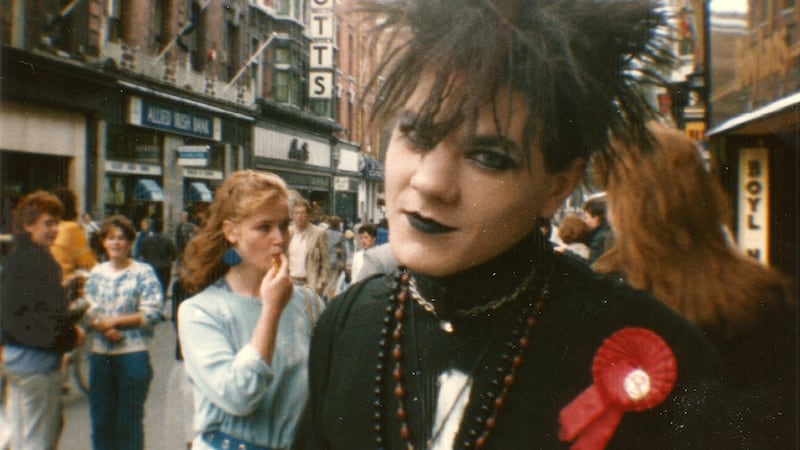
“I never saw her following me,” he says but he’d been told by his girlfriend at the time that Keelin had a crush on him. “And then I met her, and I thought, there’s no way she follows me around. She’s so kind of cool, and not fussed. I thought, she’s probably over me, and following somebody else now.”
It was another 10 years before they managed to get together properly, by which time they were such good friends that being in a relationship felt “kind of embarrassing, doomed to failure”, he says. It wasn’t, of course. “It worked out brilliantly.”
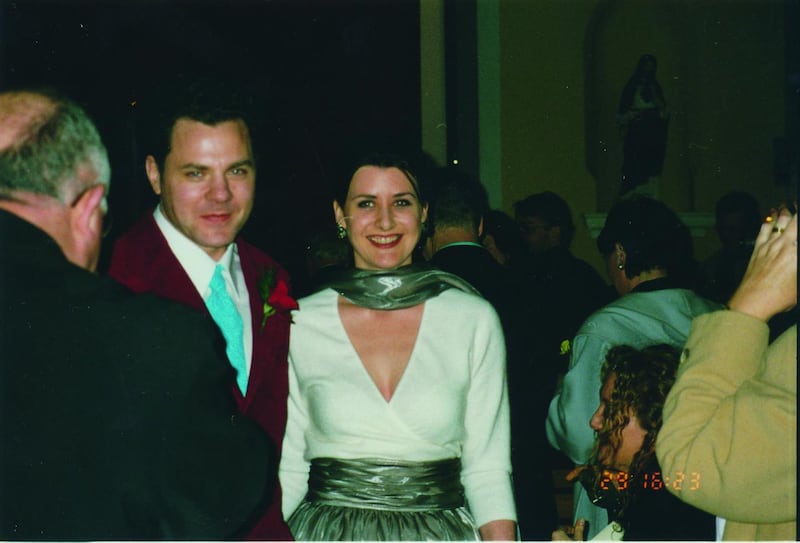
‘Endlessly curious’
She was, he writes, “extremely loving and lovable; a wonderful, enthusiastic, endlessly curious, confoundingly inconsistent, but never dull or lazy-minded person”. He describes how much they enjoyed each other’s company; how she’d sidle up next to him at social occasions, “and look at me as if I was still the interesting, surprising person she’d found me to be in our late 20s”.
“We were lucky,” he says now. “We had a great time. We really did.” They lived in nice places, and travelled a lot, had their two children. “I was always grateful for all of that at the time.”
Her attitude too, was that “there’s one really bad thing in our lives, but everything else is good. Everything else up to that one bad thing was amazing. A lot of people just don’t get to have everything we had.”
Lucy and Ben, who are now nearly 14 and 12, have “coped really well” too, he says. The lockdown, which came so quickly after Keelin’s death, gave them a chance to begin to process a world without her in it. “Our world had shrunk a lot beforehand. We weren’t going very far away from the house really. So we were already a bit locked down. That was already our new normal when it became everybody else’s new normal. It gave us a bit of space.”
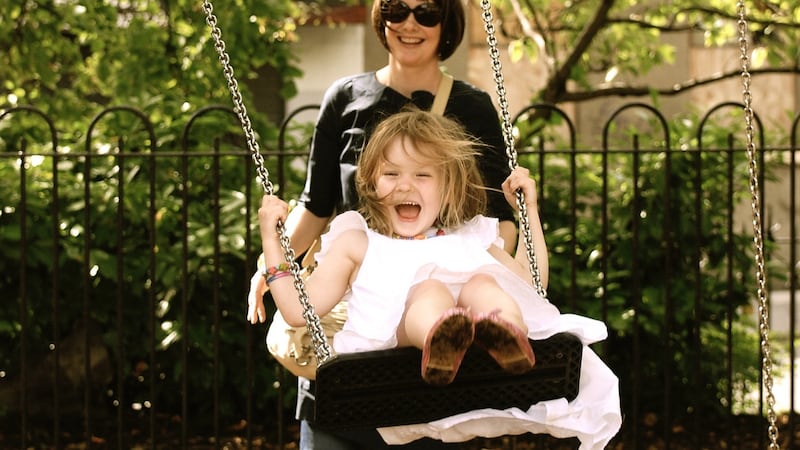
Keelin speculated that their lives together after she died “might be like an episode of the Young Ones. And it is a bit like that. They’re kind of rising to my level, and I’m coming down to their level and we’re sort of meeting in the middle. We’re each carving out territories for ourselves.”
Being involved in the book “has been great. It’s been a way to process the relationship, but with a slight slant, because I’m looking at it from the readers’ point of view”, which has given him a layer of protection. “The book has sort of kept her alive. I feel her presence from the book.”
Driving licence
And he’s also been keeping busy with the work renovating the house, finding plumbers, hanging pictures and choosing carpets, the kind of tasks that Keelin used to take responsibility for. He got his driving licence at last, two weeks before she died. “That was kind of an air punching moment, for the whole family.”
Has he been surprised by his own resilience? “It has surprised me that the wheels have stayed on the wagon, and we seem to be trundling along. I think Keelin modelled that resilience for all of us over the years. But I suppose I should credit myself a little bit as well.
“I don’t really look back with bitterness. I’m sure that may change in the future, I don’t know. But I do feel we had a great life.”
A Light That Never Goes Out: A Memoir by Keelin Shanley is published by Gill

















